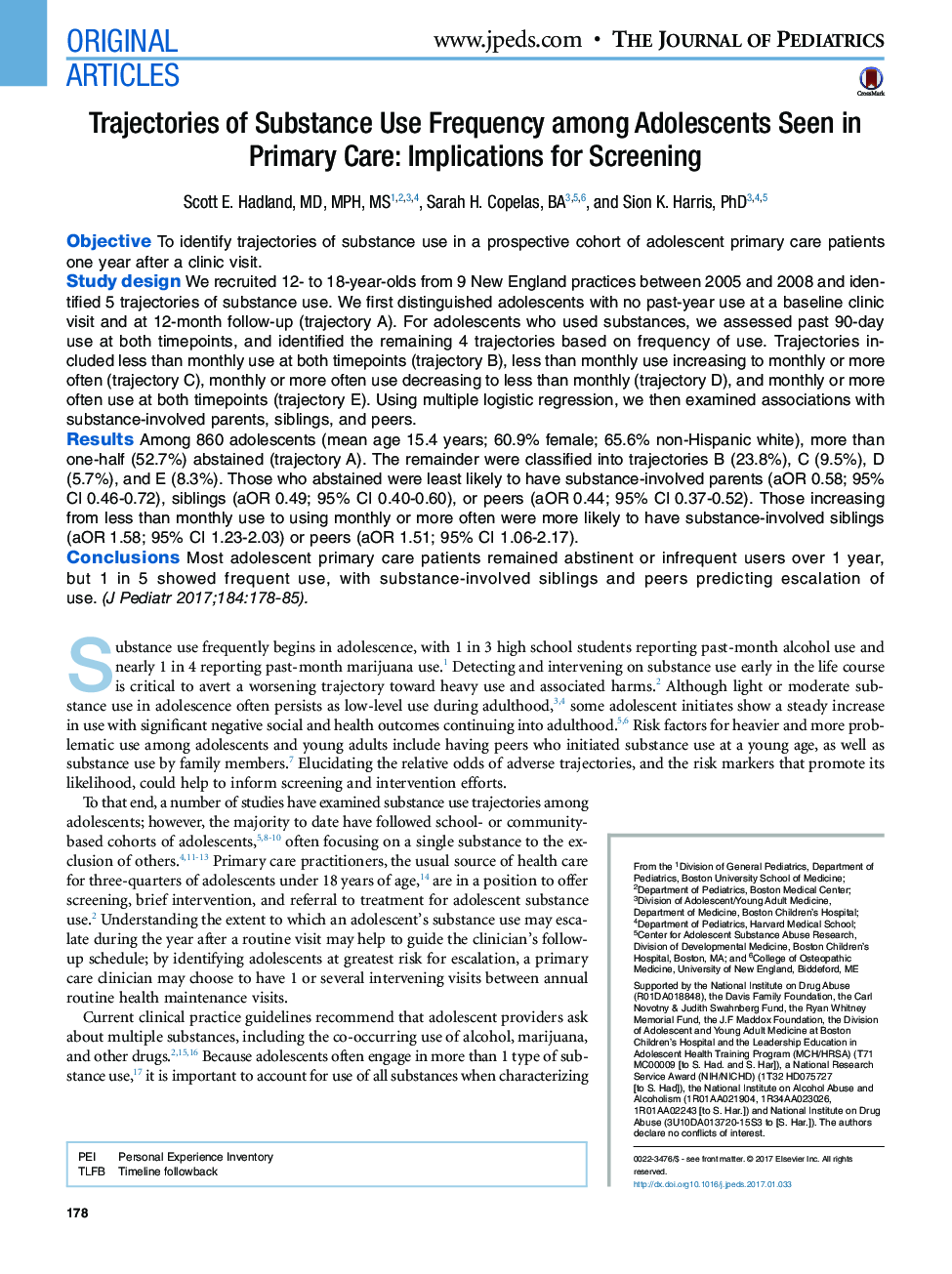| کد مقاله | کد نشریه | سال انتشار | مقاله انگلیسی | نسخه تمام متن |
|---|---|---|---|---|
| 5719600 | 1607414 | 2017 | 8 صفحه PDF | دانلود رایگان |
ObjectiveTo identify trajectories of substance use in a prospective cohort of adolescent primary care patients one year after a clinic visit.Study designWe recruited 12- to 18-year-olds from 9 New England practices between 2005 and 2008 and identified 5 trajectories of substance use. We first distinguished adolescents with no past-year use at a baseline clinic visit and at 12-month follow-up (trajectory A). For adolescents who used substances, we assessed past 90-day use at both timepoints, and identified the remaining 4 trajectories based on frequency of use. Trajectories included less than monthly use at both timepoints (trajectory B), less than monthly use increasing to monthly or more often (trajectory C), monthly or more often use decreasing to less than monthly (trajectory D), and monthly or more often use at both timepoints (trajectory E). Using multiple logistic regression, we then examined associations with substance-involved parents, siblings, and peers.ResultsAmong 860 adolescents (mean age 15.4 years; 60.9% female; 65.6% non-Hispanic white), more than one-half (52.7%) abstained (trajectory A). The remainder were classified into trajectories B (23.8%), C (9.5%), D (5.7%), and E (8.3%). Those who abstained were least likely to have substance-involved parents (aORâ0.58; 95% CIâ0.46-0.72), siblings (aORâ0.49; 95% CI 0.40-0.60), or peers (aORâ0.44; 95% CIâ0.37-0.52). Those increasing from less than monthly use to using monthly or more often were more likely to have substance-involved siblings (aORâ1.58; 95% CI 1.23-2.03) or peers (aORâ1.51; 95% CI 1.06-2.17).ConclusionsMost adolescent primary care patients remained abstinent or infrequent users over 1 year, but 1 in 5 showed frequent use, with substance-involved siblings and peers predicting escalation of use.
Journal: The Journal of Pediatrics - Volume 184, May 2017, Pages 178-185
